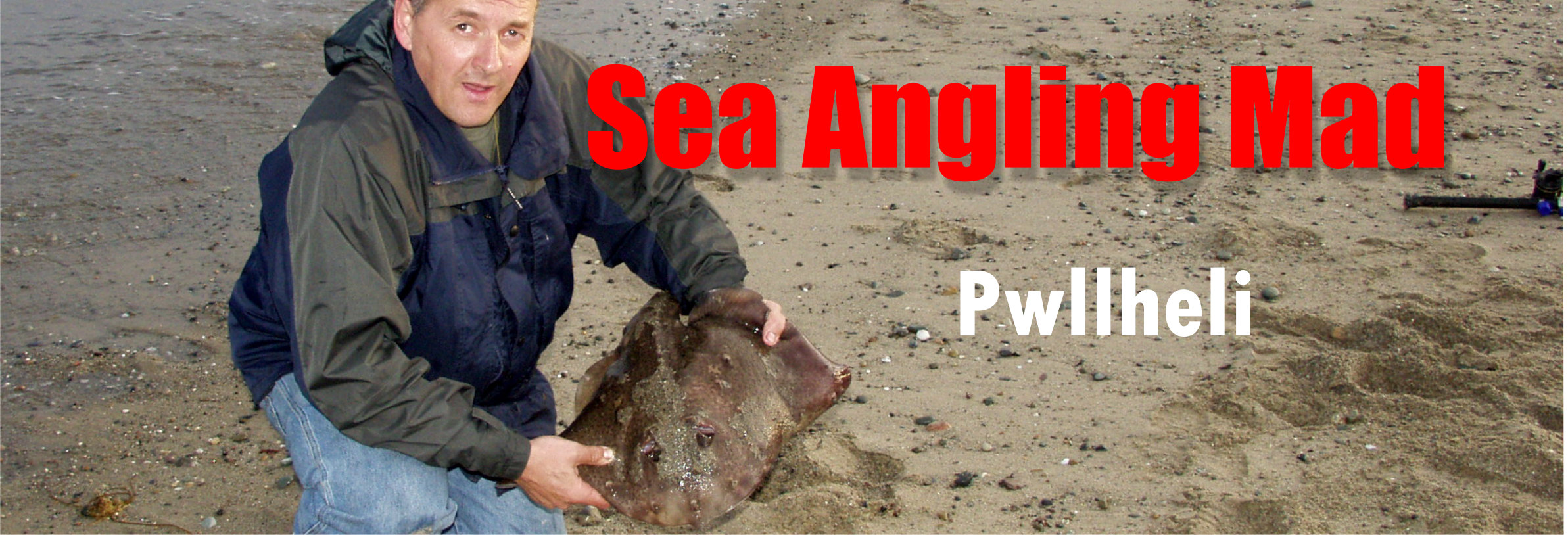
Last Updated October 2022
Pwllhel
Description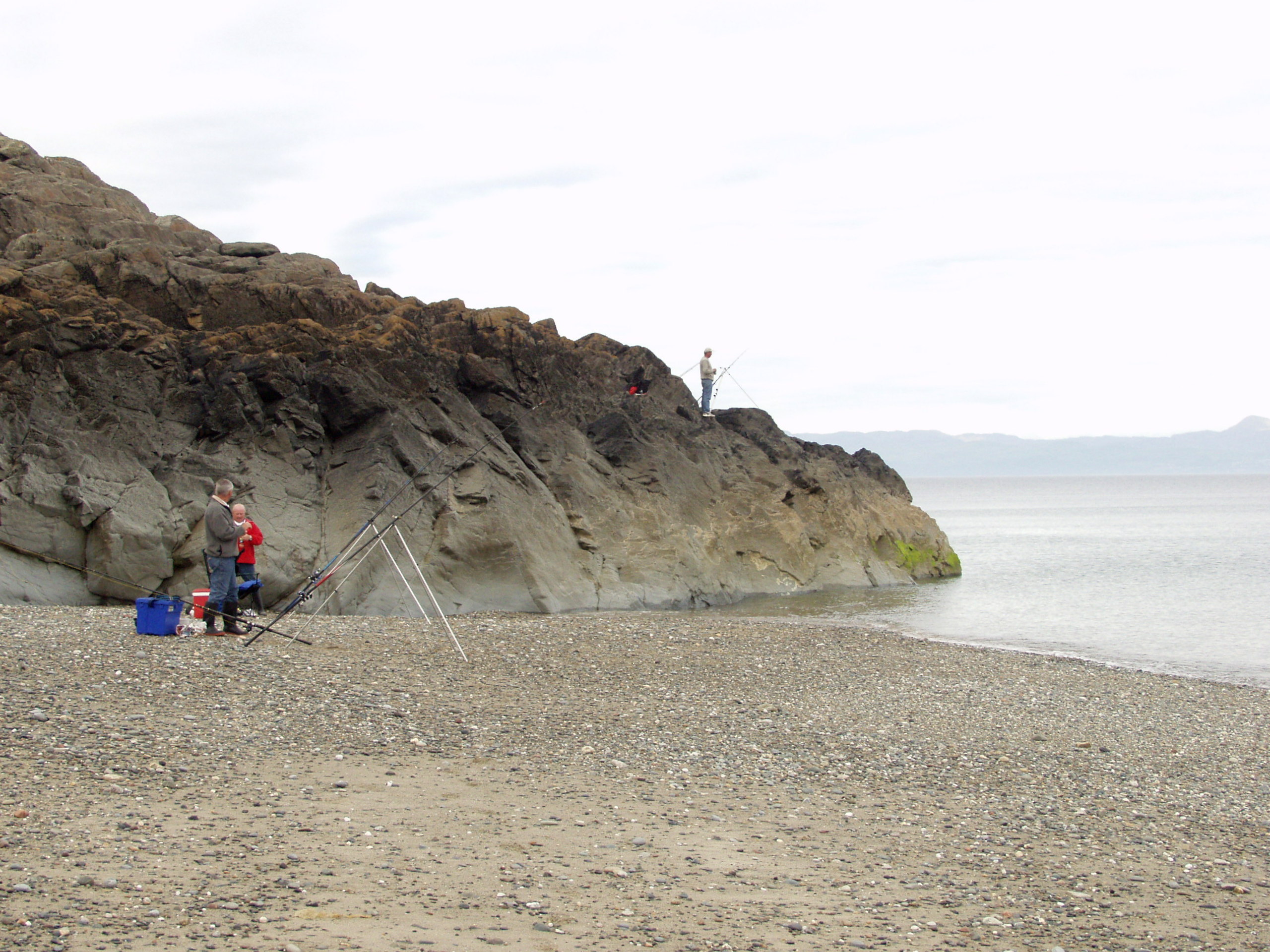
Pwllheli Gimblet Rock
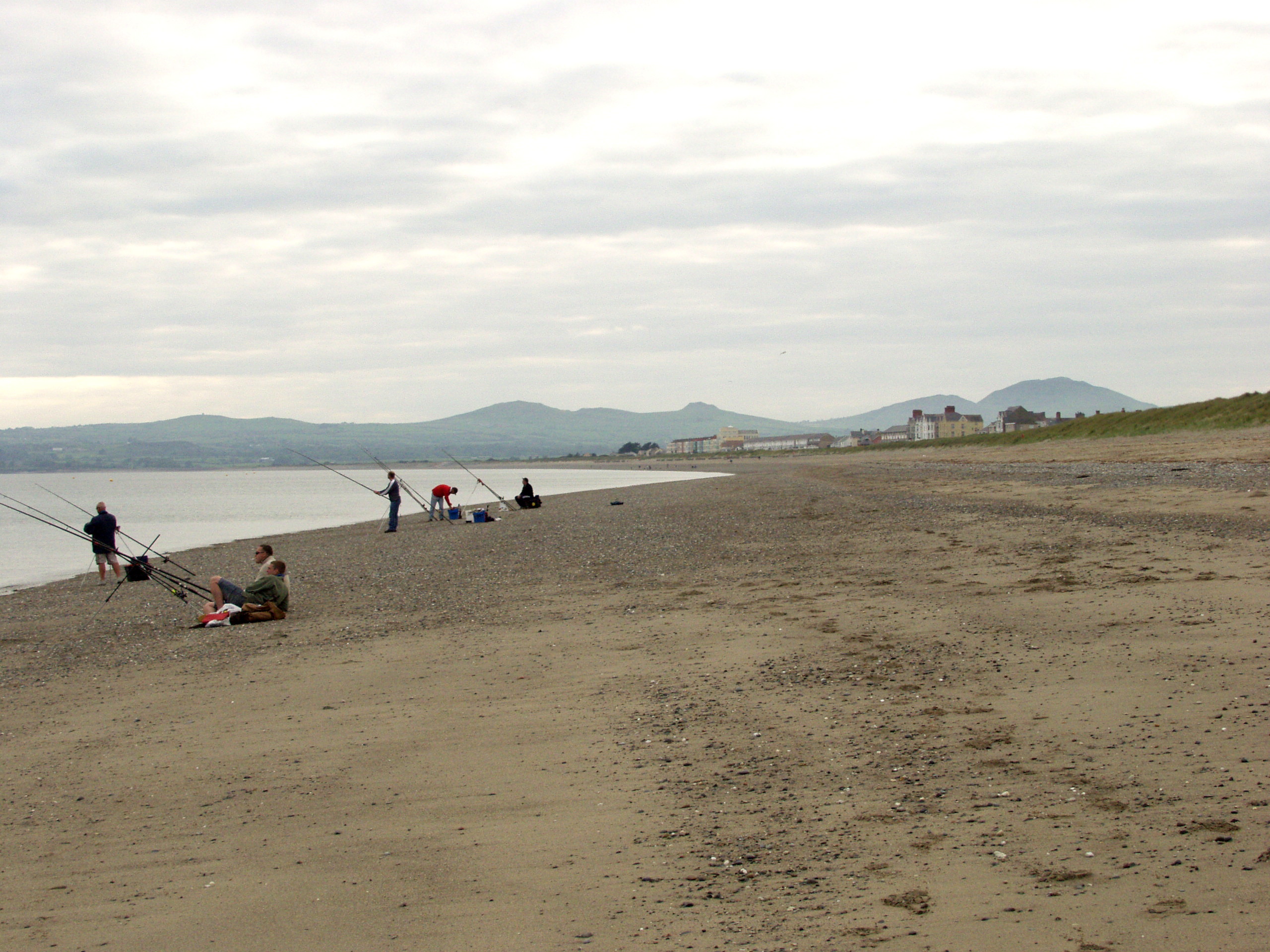
An extensive beach made up of mainly sand but with some areas of gravel. It offers a reasonable depth of water fairly close in especially so the closer you are to Gimblet Rock. Tackle and tactics will vary depending upon sea conditions and species being targeted.
Normal beach casting gear is the norm as the sea bed is relatively clean and mostly sand with some patches of mud and gravel. Weights 130 - 150grm grips should hold bottom in most conditions. Fishing small hooks at close range 30-40m only using a plain lead can be very productive. This allows the bait to move around in the tide and the small dabs and gurnards seem to fall for a bait fished this way.
Weed can be a problem at times especially after a good blow. A wind from a south or south western direction doesn’t have to be very strong to make fishing quite hard work.
Summer Species
In March and April there's a chance of bull huss with the inevitable dogfish ever present. May see's the chance of bass and thornback ray. From June through to August will give you your best chance of bream. July through to October will sea large shoals of mackerel close inshore especially during a settled spell of fine weather. and when high water falls in the evening. September and early October see the whiting
Description

Pwllheli Gimblet Rock

Pwllheli looking west with Gimblet Rock behind
An extensive beach made up of mainly sand but with some areas of gravel. It offers a reasonable depth of water fairly close in especially so the closer you are to Gimblet Rock. Tackle and tactics will vary depending upon sea conditions and species being targeted.
Normal beach casting gear is the norm as the sea bed is relatively clean and mostly sand with some patches of mud and gravel. Weights 130 - 150grm grips should hold bottom in most conditions. Fishing small hooks at close range 30-40m only using a plain lead can be very productive. This allows the bait to move around in the tide and the small dabs and gurnards seem to fall for a bait fished this way.
Weed can be a problem at times especially after a good blow. A wind from a south or south western direction doesn’t have to be very strong to make fishing quite hard work.
Summer Species
In March and April there's a chance of bull huss with the inevitable dogfish ever present. May see's the chance of bass and thornback ray. From June through to August will give you your best chance of bream. July through to October will sea large shoals of mackerel close inshore especially during a settled spell of fine weather. and when high water falls in the evening. September and early October see the whiting
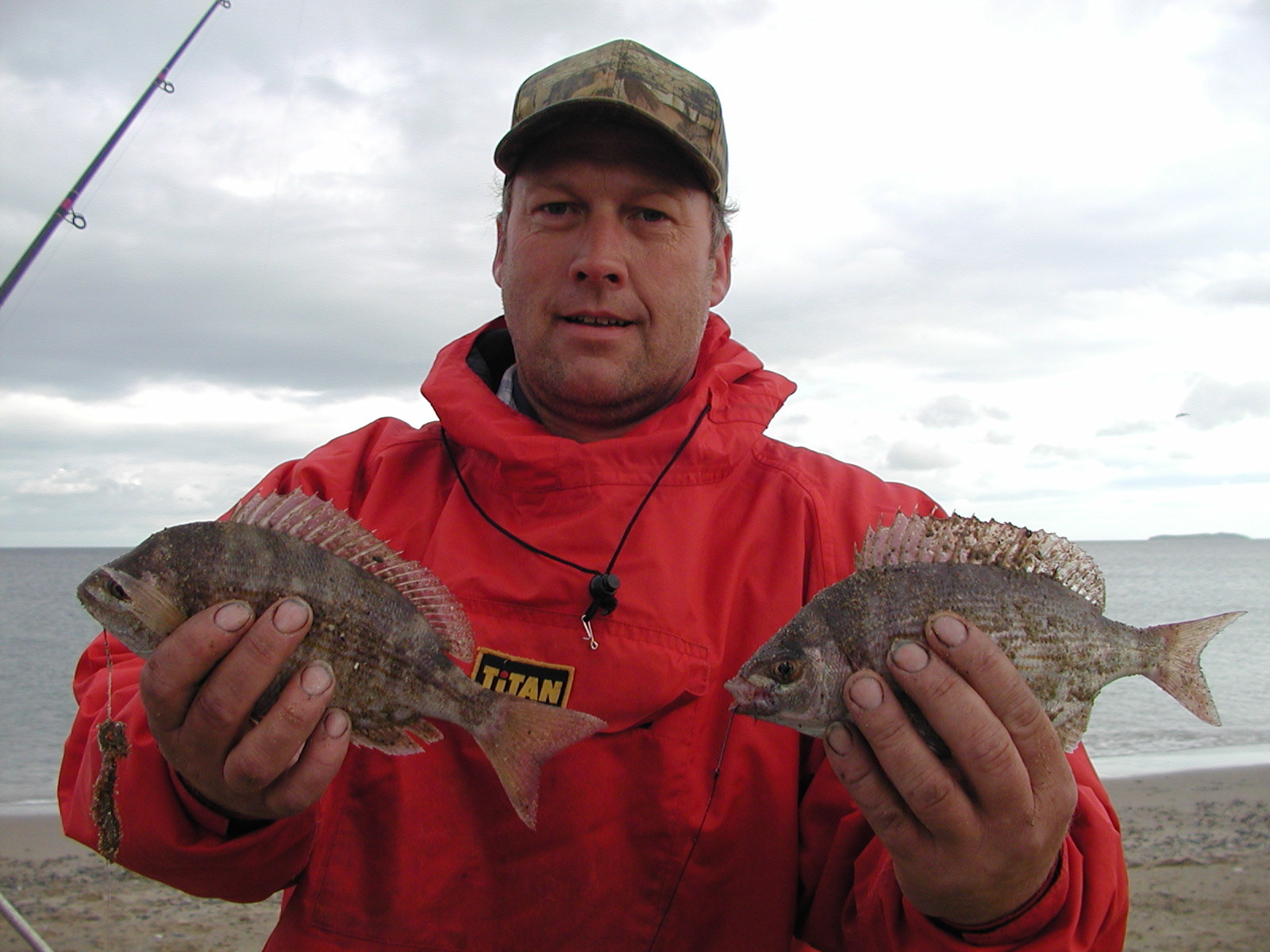
Pwllheli is well known for its bream fishing.
return while the dogfish are reaching almost plague levels.
Pwllheli is an excellent beach to target a shore caught tope. July and August are the best months but fish can be be caught almost anytime during the summer months if the mackerel shoals are close in.
Winter Species
Whiting start to show from late September and their numbers steadily increasing through November remaining well into the New Year when they start decreasing. The period from late January to early March catches are normally just small whiting and dabs with a few dogfish. By late March and into April the whiting have now larglely disappeared. Now the chance of bull huss, a thornback ray or an early bass are where you should be targetting your efforts if you can avoid the ever present dogfish.
Pwllheli is an excellent beach to target a shore caught tope. July and August are the best months but fish can be be caught almost anytime during the summer months if the mackerel shoals are close in.
Winter Species
Whiting start to show from late September and their numbers steadily increasing through November remaining well into the New Year when they start decreasing. The period from late January to early March catches are normally just small whiting and dabs with a few dogfish. By late March and into April the whiting have now larglely disappeared. Now the chance of bull huss, a thornback ray or an early bass are where you should be targetting your efforts if you can avoid the ever present dogfish.
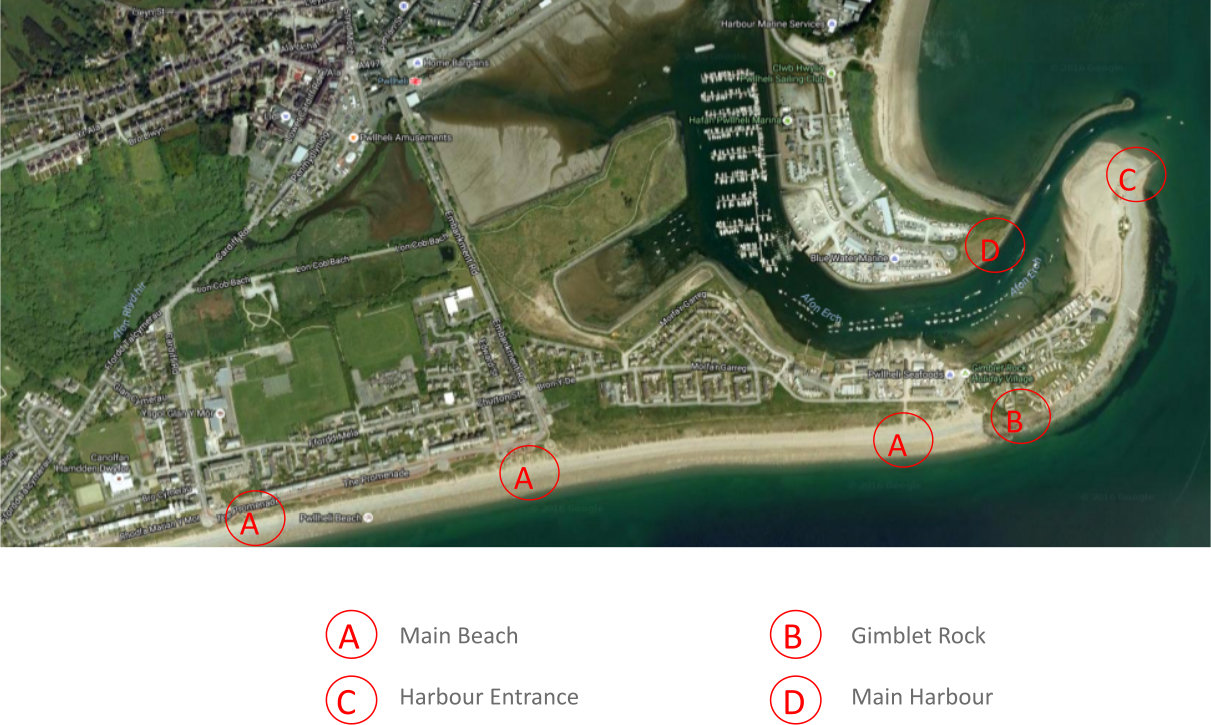
How to get thereDirections:-
Find your way to the traffic island by Pwllheli Railway Station.
Form there access to the beach is via Embankment Road. This is the straight road which runs along the western side of the muddy harbour.
After about 600m you come to another small traffic island. For the western end of the beach; Go straight on at and follow the road around to you right.
For Gimblet Rock, the eastern end of the beach, turn left off Embankment Road onto Bron-Y-De. Follow the road until you reach a boat yard on the left and a concrete building on your right. You'll see small car park from where there's easy access to the beach and Gimblet Rock.
Be warned:-
- weed can be a real issue at times especially in late summer and early autumn.
- popular with holiday makers insummer months especially during school holidays.
Tide Times Pwllheli
NEAREST POST CODE
LL53 5AY
